Neuroscience Research: Using molecular, cellular and behavioral approaches to study neurological disorders
Research in the Bi laboratory focuses on understanding the molecular and cellular basis of neurological disorders, including genetic developmental disorders and age-related neurodegenerative diseases. We use multiple approaches to analyze gene expression regulation, protein-protein interactions, and the functions and dynamics of various subcellular organelles in synaptic, neuronal, and behavioral adaptations resulting from internal and environmental alterations.
Lab Members

Wenyue Su, PhD
Postdoctoral Researcher

Dr. Eduardo Penna
Postdoctoral Researcher

Tristan Reece
Research Assistant

Andrea Shammas
MSBS student
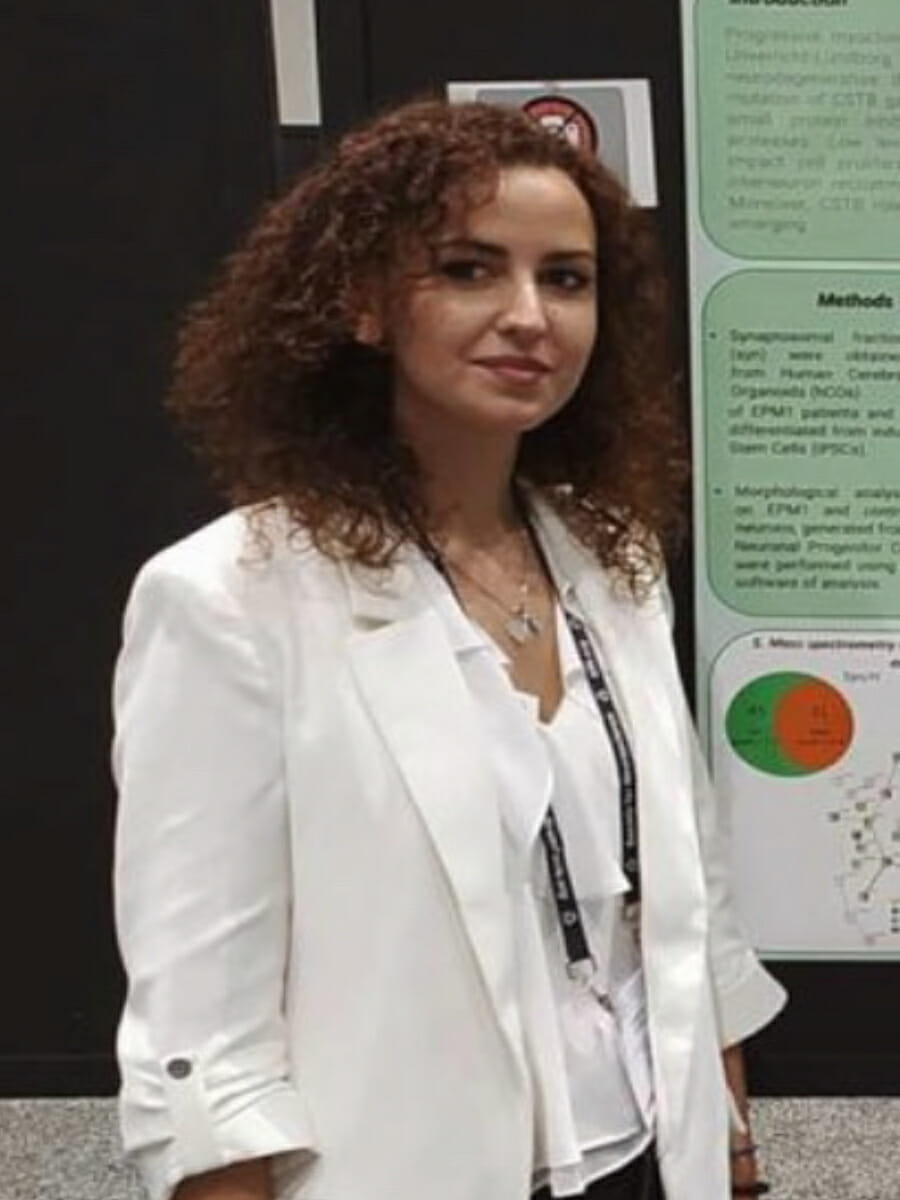
Amelia Pizzella
Visiting Researcher Scholar

Martina Perez
Research Assistant
The lysosomal protein, LAMTOR1/p18, regulates learning and memory by controlling mTOR signaling pathways; alterations in this regulation contribute to the pathogenesis of Angelman syndrome
One of the Bi Lab projects over the last few years has focused on the mTOR (mechanistic/mammalian target of rapamycin) signaling pathway. mTOR consists of two complexes, mTORC1 and mTORC2, and integrates signals from nutrients, energy levels, growth factors, and stress status. We have recently found that mTORC1 activity is increased while mTORC2 activity is decreased in a mouse model of Angelman syndrome (AS), a disease caused by maternal UBE3A deficiency. The imbalance in mTORC1 and mTORC2 activity is causally related to learning and memory impairment and motor dysfunction in AS mice. Furthermore, we have found that increased mTORC1 activity is due to increased levels of LAMTOR1 (a.k.a. p18) in AS mice due to the lack of Ube3a-mediated degradation. Since abnormal mTOR signaling has been reported in other neurological disorders, including Alzheimer’s disease and autism spectrum disorders, our findings may have broad implications for the understanding of numerous neurological disorders.
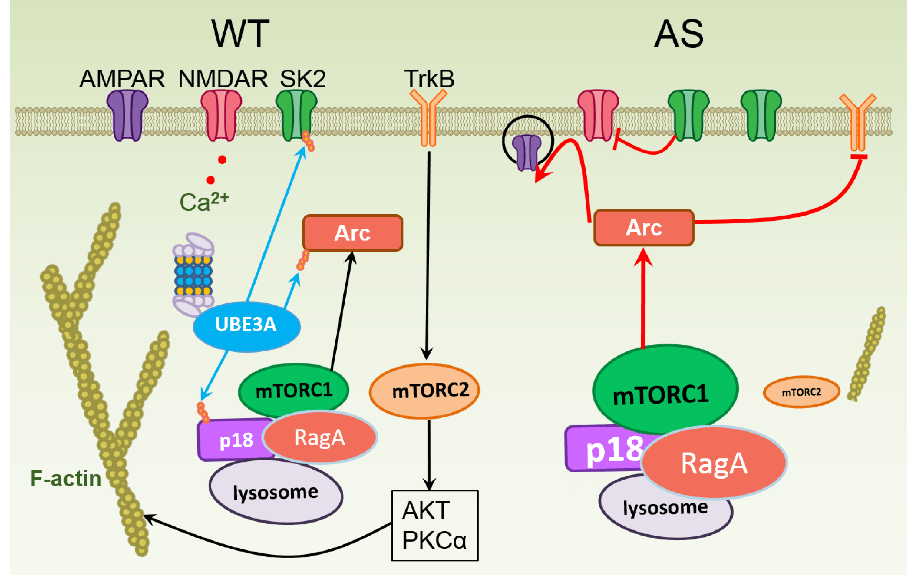
Potential roles of p18-mTORC1 signaling in synaptic plasticity and learning and memory in wild-type mice (WT) and Angelman syndrome (AS) model mice.
Activation of mTORC1-dependent local protein synthesis increases levels of the immediate-early gene product, Arc (activity-regulated cytoskeleton-associated protein) in AS mice; Arc induces AMPAR endocytosis, which dampens synaptic plasticity and learning efficiency. Reduced mTORC2 activity also hinders synaptic plasticity and memory consolidation.
Regulation of potassium channels by UBE3A
Small conductance calcium-activated potassium channels (SK1-3) are widely distributed throughout the brain and other organs. SK2 channels play important roles in learning and memory and in abnormal brain functions, such as epilepsy and schizophrenia. We have recently shown that synaptic SK2 levels are regulated by UBE3A-mediated degradation, and that lack of this regulation resulting from UBE3A deletion contributes to learning impairment in Angelman syndrome mice. Currently, we are investigating whether protein kinase A-mediated regulation of SK2 channels influences their regulation by UBE3A. Since SK2 channels are widely expressed in mammalian brain, these findings have significant implications for a vast array of neurologic/neuropsychiatric disorders.
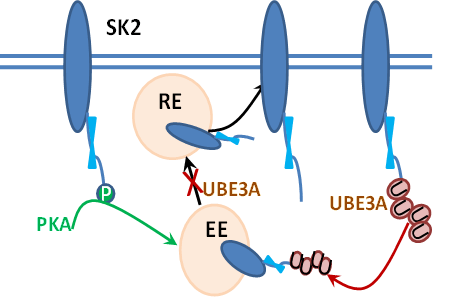
Regulation of SK2 channels by UBE3A and PKA facilitates the endocytosis of the channels. Lack of UBE3A-mediated regulation increases synaptic expression of SK2 channels, which impairs synaptic plasticity and neuronal rhythmic activity.
Lysosomal dysfunction in brain aging
We previously reported that lysosomal dysfunction started earlier than previously thought during aging in mammals and was already apparent in middle age. Recent studies have shown that lysosomes have much broad roles than just being a “cellular digestion organelle”; these functions include regulation of protein synthesis and degradation, lipid and glucose metabolism, and gene transcription, at the cellular level; lysosomes also play a significant role in learning and memory, immune function, and cancer development and aging process, etc., at the system level. We are currently developing in vitro and in vivo assays to further investigate the roles of lysosomes in age-related neurodegenerative diseases.
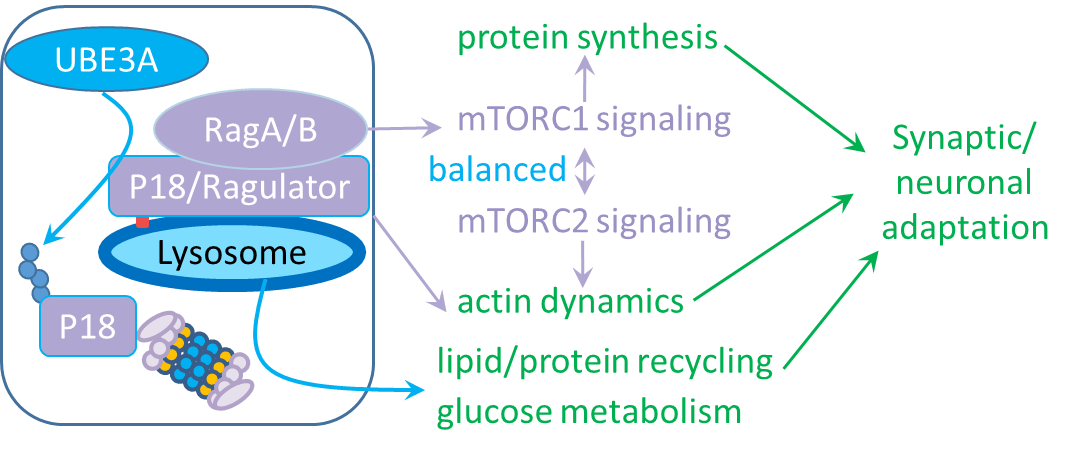
Selected Publications (from 2010)
2019
Heysieattalab S, Lee KH, Liu Y, Wang Y, Foy MR, Bi X, Baudry M (2019) Impaired cerebellar plasticity and eye-blink conditioning in calpain-1 knock-out mice. Neurobiol Learn Mem. 2019 Feb 5. pii: S1074-7427(19)30015-2. doi: 10.1016/j.nlm.2019.02.005. [Epub ahead of print] PMID: 30735788
Liu Y., Johe K., Sun J., Hao X., Wang Y., Bi X, Baudry M. (2019) Enhancement of synaptic plasticity and reversal of impairments in motor and cognitive functions in a mouse model of Angelman Syndrome by a small neurogenic molecule, NSI-189. Neuropharmacology. 2019 Jan;144:337-344. doi: 10.1016/j.neuropharm.2018.10.038. Epub 2018 Nov 5.PMID: 3002 0076 (2018) PMID: 30408487
2018
Sun J, Liu Y, Jia Y, Hao X, Lin WJ, Tran J, Lynch G, Baudry M, Bi X (2018). UBE3A-mediated p18/LAMTOR1 ubiquitination and degradation regulate mTORC1 activity and synaptic plasticity. Elife. 2018 Jul 18;7. pii: e37993. doi: 10.7554/eLife.37993. [Epub ahead of print] PMID: 30020076
Wang, Y., Bi, X., and Baudry M (2018) Calpain-2 as a therapeutic target for acute neuronal injury. Expert Opin Ther Targets. 2018 Jan;22(1):19-29. doi: 10.1080/14728222.2018.1409723. Epub 2017 Nov 28. Review. PMID: 29168923 PMID: 29168923
2017
Wang, Y., Hall R.A., Lee, M., Kamgar-Parsi, A., Bi, X., and Baudry M (2017) The tyrosine phosphatase PTPN13/FAP-1 links calpain-2, TBI and tau tyrosine phosphorylation. Sci Rep. 2017 Sep 18;7(1):11771. doi: 10.1038/s41598-017-12236-3. PMID: 28924170
Wang, Y., Liu Y., Lopez D., Lee M., Dayal S., Hurtado A., Bi, X., and Baudry M (2017) Protection against TBI-induced neuronal death with post-treatment with a selective calpain-2 inhibitor in mice. J Neurotrauma. 2017 Jun 8. doi: 10.1089/neu.2017.5024. [Epub ahead of print] PMID: 28594313
Zhu G., Briz V., Seinfeld J., Liu Y., Bi X., Baudry M. (2017) Calpain-1 deletion impairs mGluR-dependent LTD and fear memory extinction. Sci. Rep 2017 Feb 16;7:42788. doi: 10.1038/srep42788. PMID: 28202907
Sun J, Baudry M, Bi X. (2017) Novel neurobiological roles of UBE3A. Oncotarget. 2017 Feb 5. doi: 10.18632/oncotarget.15105. [Epub ahead of print] PMID: 28179584
2016
Seinfeld J, Baudry N, Xu X., Bi X., and Baudry M (2016) Differential activation of calpain-1 and calpain-2 following kainate-induced seizure activity in rats and mice. eNeuro 2016; 10.1523/ENEURO.0088-15.2016 PMID: 27622212
Liu Y., Sun J., Wang Y., Lopez D., Tran J., Bi X, Baudry M. (2016) Deleting both PHLPP1 and CANP1 rescues impairments in long-term potentiation and learning in both single knockout mice. Learn Mem. 2016 Jul 15;23(8):399-404. doi: 10.1101/lm.042721.116. Print 2016 Aug. PMID: 27421891
Wang, Y., Lopez D., Davey P.G., Cameron J., Nguyen K., Tran J., Marquez E., Liu Y., Bi, X., and Baudry M (2016) Calpain-1 and calpain-2 play opposite roles in retinal ganglion cell degeneration induced by retinal ischemia/reperfusion injury. Neurobiol Dis. 2016 Sep;93:121-8. doi: 10.1016/j.nbd.2016.05.007. Epub 2016 May 13. PMID: 27185592
Wang Y, Hersheson J, Lopez D, Hammer M, Liu Y, Lee KH, Pinto V, Seinfeld J, Wiethoff S, Sun J, Amouri R, Hentati F, Baudry N, Tran J, Singleton AB, Coutelier M, Brice A, Stevanin G, Durr A, Bi X, Houlden H, Baudry M. (2016) Defects in the CAPN1 gene result in alterations in cerebellar development and in cerebellar ataxia in mice and humans. Cell Rep. 2016 Jun 28;16(1):79-91. doi: 10.1016/j.celrep.2016.05.044. Epub 2016 Jun 16. PMID: 27320912.
Sun J., Liu Y., Tran J., O’Neal P., Baudry M., and Bi X. (2016) mTORC1-S6K1 inhibition or mTORC2 activation improves hippocampal synaptic plasticity and learning in Angelman syndrome mice. Cell Mol Life Sci. 2016 Nov;73(22):4303-4314. PMID: 27173058
Liu Y, Wang Y., Zhu G, Sun J., Bi X, Baudry M. (2016) A calpain-2 selective inhibitor enhances learning & memory by prolonging ERK activation. Neuropharm. Feb 18;105:471-477. doi: 10.1016/j.neuropharm.2016.02.022. [Epub ahead of print] PMID: 26907807
Baudry M., and Bi X. (2016) Calpain-1 and calpain-2: The yin and yang of synaptic plasticity and neurodegeneration. Trend Neurosci. 39(4):235-45. doi: 10.1016/j.tins.2016.01.007. Epub 2016 PMID: 26874794
Bi, X. Sun, J, Ji, A.X. Baudry, M (2016) Potential therapeutic approaches for Angelman syndrome. Expert Opin Ther Targets. 2016 2016;20(5):601-13. doi: 10.1517/14728222.2016.1115837. PMID: 26558806
2015
Briz V, Liu Y, Zhu G, Bi X, Baudry M. (2015) A novel form of synaptic plasticity in field CA3 of hippocampus requires GPER1 activation and BDNF release. J Cell Biol 2015 Sep 28;210(7):1225-37. doi: 10.1083/jcb.201504092. Epub 2015 Sep 21. PMID: 26391661
Sun J, Liu Y, Zhu G., Standley S., Ji A., Tunuguntla R., Wang Y., Claus C., Lou Y., Baudry M., Bi X. (2015) UBE3A regulates synaptic plasticity and learning and memory by controlling SK2 channel endocytosis. Cell Rep. 2015 Jul 21;12(3):449-61. doi: 10.1016/j.celrep.2015.06.023. Epub 2015 Jul 9. PMID: 26166566
Bi, X. Sun, J, and Baudry, M (2015) Yin-and-Yang of mTORC1/C2 in Angelman syndrome. Oncotarget, Vol. 6, No. 16. 13844-13845. Editorial. PMID: 26116835
Liao G., Wang Z., Lee E., Moreno S., Abuelnasr O., Baudry M., Bi X (2015) Enhanced expression of matrix metalloproteinase-12 contributes to Npc1 deficiency-induced axonal degeneration. Exp Neurol 269:67-74. PMID: 25864931
Sun J, Liu Y, Moreno S., Baudry M, Bi X (2015) Imbalanced mTORC1 and mTORC2 activity in cerebellum of Angelman syndrome mice impairs motor function. J Neurosci 35(11): 4706-4718. PMID: 25788687
Briz V, Zhu G, Wang Y, Liu Y, Avetisyam M, Bi X, Baudry M. (2015) Activity-dependent rapid local RhoA synthesis is required for hippocampal synaptic plasticity. J Neurosci ;35(5):2269-2282. PMID: 25653381
Zhu G, Liu Y, Wang Y, Bi X, Baudry M. (2015) Different Patterns of Electrical Activity Lead to Long-term Potentiation by Activating Different Intracellular Pathways. J Neurosci ;35(2):621-33. PMID: 25589756
Baudry M, Zhu G, Liu Y, Wang Y, Briz V, Bi X. (2015) Multiple cellular cascades participate in long-term potentiation and in hippocampus-dependent learning. Brain Res. 2015 Sep 24;1621:73-81. doi: 10.1016/j.brainres.2014.11.033. Epub 2014 Dec 4. PMID: 25482663
2014
Wang, Y., Zhu, G., Briz, V., Hsu, Y.-T., Bi, X., and Baudry M, (2014) A molecular brake controls the magnitude of long-term potentiation. Nature Commun 2014;5:3051. doi: 10.1038/ncomms4051. PMID: 24394804
2013
Wang, Y., Briz V., Chishti A., Bi X., Baudry M. (2013) Distinct roles for μ-calpain and m-calpain in synaptic NMDAR-mediated neuroprotection and extrasynaptic NMDAR-mediated neurodegeneration. J Neurosci. 2013 Nov 27;33(48):18880-92. doi: 10.1523/JNEUROSCI.3293-13.2013. PMID: 24285894
Baudry, M., Bi, X. (2013) Learning and memory: An emergent property of cell motility. Neurobiol Learn Mem. 2013 May 21;104C:64-72. PMID: 23707799
Briz, V., Hsu, Y.-T., Li, Y., Lee, E., Bi, X., and Baudry, M (2013) Calpain-2-mediated PTEN degradation contributes to BDNF-induced stimulation of dendritic protein synthesis. J. Neurosci. 2013 Mar 6;33(10):4317-28. PMID: 23467348
Baudry, M., Chou, M.M., and Bi, X. (2013) Targeting calpain in synaptic plasticity. Expert Opin Ther Targets. 2013 May;17(5):579-92. PMID: 23379852
Baudry, M., Bi, X., and Aguirr, C. (2012) Progesterone-estrogen interactions in synaptic plasticity and neuroprotection. Neuroscience. 2013 Jun 3;239:280-94. 2012 Nov 7. PMID: 23142339
2012
Allyson, J., Bi, X., Baudry, M., and Massicotte G. (2012) Maintenance of synaptic stability requires calcium-independent phospholipase A2 activity. Neural Plasticity. 2012:569149. doi: 10.1155/2012/569149. Epub 2012 May 20. PMID: 22685677
Baudry, M., Kramar, E., Xu, X., Zadran, H., Moreno, S., Lynch, G., Gall C., and Bi, X. (2012) Ampakines promote spine actin polymerization, long-term potentiation, and learning in a mouse model of Angelman Syndrome. Neurobiol. Dis. 47(2):210-5. Epub 2012 Apr 16. PMID: 22525571
Clausen A., Xu X., Bi X., and Baudry M. (2012) Effects of the superoxide dismutase/catalase mimetic EUK-207 in a mouse model of Alzheimer’s disease: Protection against and interruption of progression of amyloid and tau pathology and cognitive decline. J Alzheimers Dis. 30(1):183-208. PMID: 22406441
2011
Hsu Y.-T., Liao G., Bi X., Oka, T., Tamura, S., and Baudry, M. (2011) The PDE10A inhibitor, papaverine, differentially activates ERK in male and female rat striatal slices. Neuropharmacology. 2011 Dec;61(8):1275-81. Epub 2011 Jul 28. PMID: 21816164
Yu L., Rostamiani K., Hsu Y.-T., Wang Y., Bi X., and Baudry M. (2011) Calpain-mediated regulation of stargazin in adult rat brain. Neuroscience 2011 Mar 31;178:13-20. Epub 2011 Jan 20. PMID: 21256931
Baudry M., Bi X., Gall C.M., and Lynch G. (2011) The Biochemistry of Memory: The Twenty-Six Year Journey of a ‘New and Specific Hypothesis’ Neurobiol Learn Mem. 2011 Feb;95(2):125-33. Epub 2010 Dec 4. PMID: 21134478
2010
Zadran S., Bi X. and Baudry, M. (2010) Regulation of calpain-2 in neurons: Implications for synaptic plasticity. Mol. Neurobiol. 2010 Oct;42(2):143-150. Epub 2010 Oct 6. PMID: 20924799
Qin, Q., Liao, G., Baudry, M., and Bi X. (2010) Role of calpain-mediated p53 truncation in semaphorin 3A-induced axonal growth regulation. Proc. Nat. Acad. Sci. USA 107(31):13883-7. Epub 2010 Jul 19. PMID: 20643936
Qin Q., Liao, G., Baudry M., and Bi X. (2010) Cholesterol perturbation in mice results in p53 degradation and axonal pathology through p38 MAPK and Mdm2 activation. PLoS ONE 5(4): e9999. doi:10.1371/journal.pone.0009999 PMID: 20386595
Zadran S., Jourdi H., Rostamiani K., Qin Q., Bi X. and Baudry, M. (2010) BDNF- and EGF-mediated neuronal calpain activation through MAPK-dependent phosphorylation. J. Neurosci, 2010 30: 1086-1095 PMID: 20089917
Liao, G., Wen, Z., Irizarry, K., Huang, Y., Mitsouras, K., Darmani, M., Leon, T., Shi, L. and Bi, X. (2010). Abnormal gene expression in cerebellum of Npc1-/- mice during postnatal development. Brain Res. 1325:128-140 PMID: 20153740
Bi X, Liao G. (2010) Cholesterol in Niemann-Pick Type C disease. Subcell Biochem. 2010;51:319-35. doi: 10.1007/978-90-481-8622-8_11. Review. PMID: 20213549
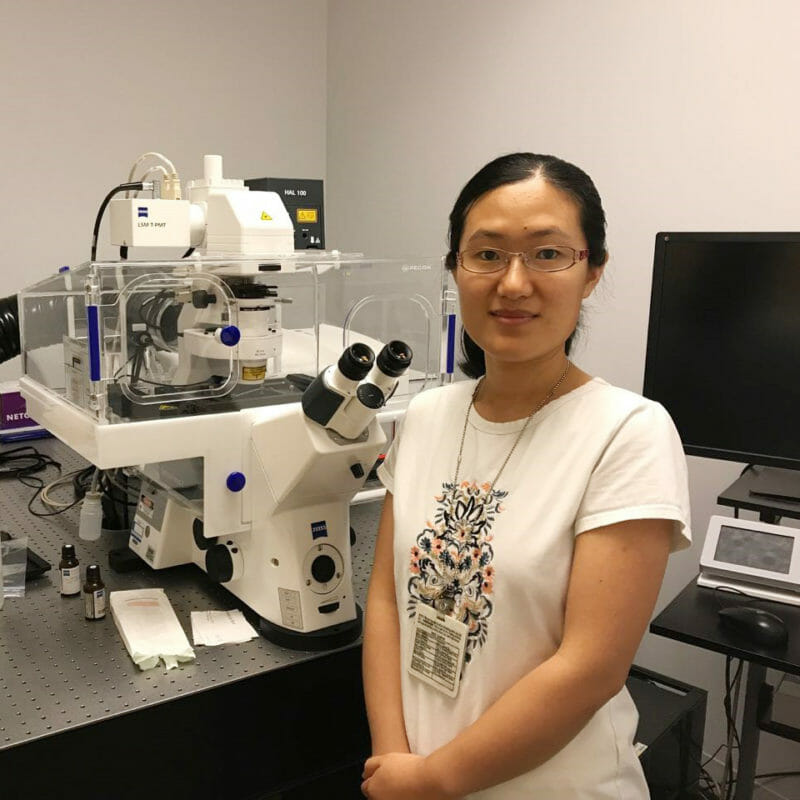
| Jiandong Sun, PhD Senior Postdoctoral Researcher sunj@westernu.edu |
|---|---|

| Yan Liu, PhD Postdoctoral Researcher yliu@westernu.edu |

| Xiaoning Hao, MS Research Assistant xhao@westernu.edu |

| Wei-Ju Lin MS student in Biomedical Sciences wjlin@westernu.edu |
|
|



